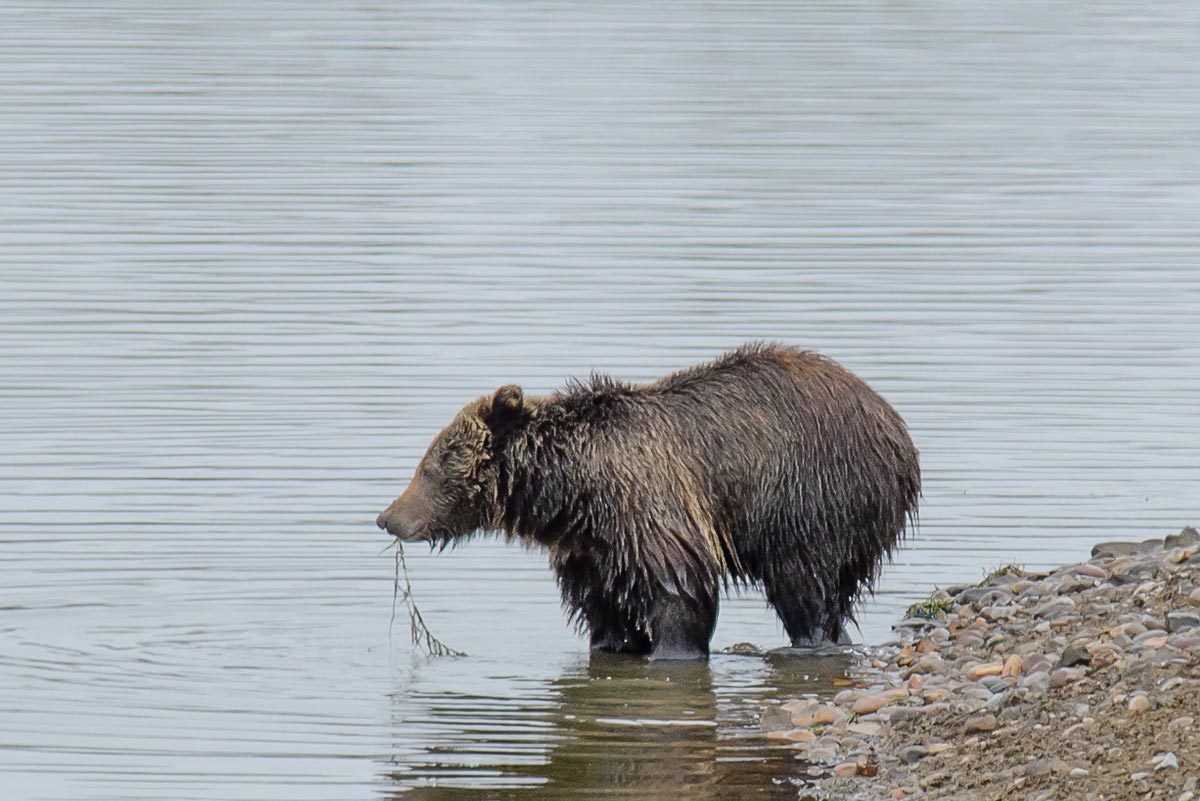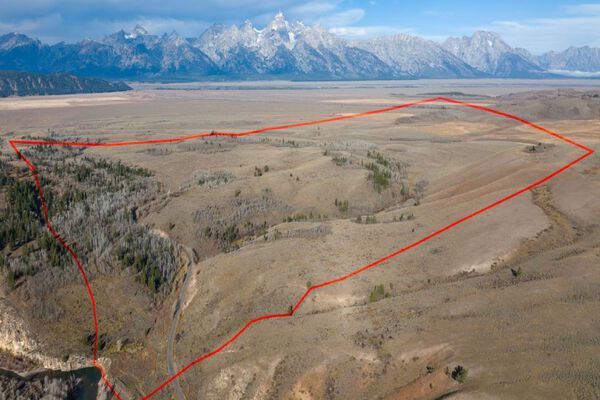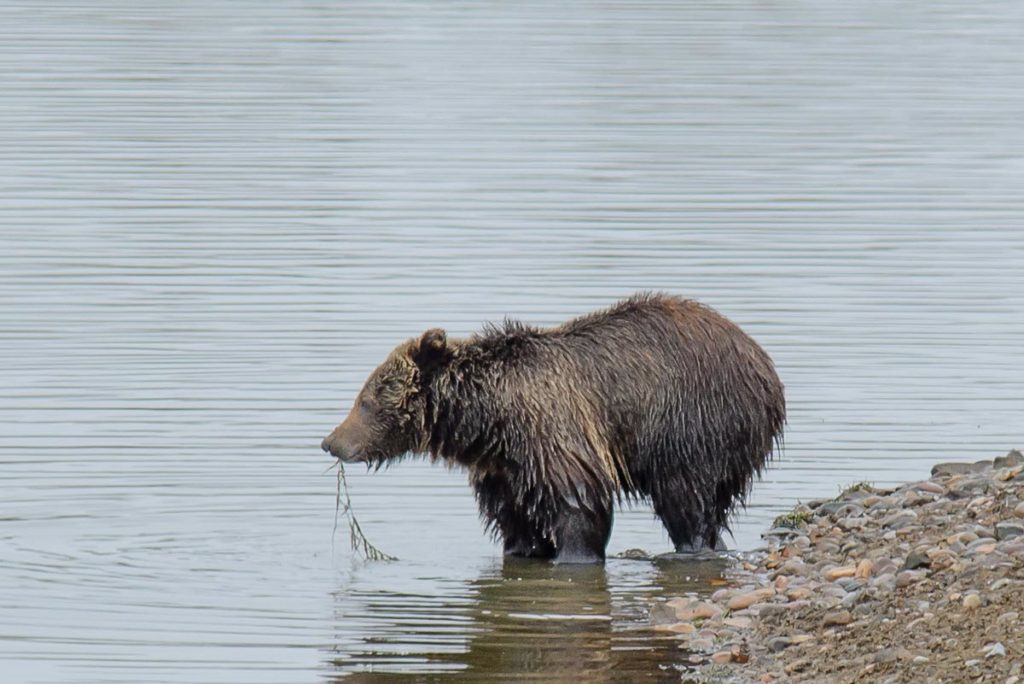
Photo by Jerry Herman
Fall is here and Grand Teton’s birds are migrating to their wintering areas, as bears and other wildlife are searching for food to prepare for the winter ahead.
• As of early September, grizzly bear 610 still had the two cubs-of-the-year she emerged from a den with this spring.
• Verified sightings of grizzly bear 399 have been few this year, but recent sightings of a bear “looking good” in the northern portion of the park are very likely her. She weaned two, 2-year-old offspring in May, and likely bred shortly after, which means she has the potential of having cubs of the year again in 2016.
• Interagency Grizzly Bear Study Team scientists reported in August that 2015 was an average year for production of whitebark pine cones–an important food source for bears–in the Greater Yellowstone Ecosystem, but they found substantial variation throughout the region. Locally, as of early September, it looked like Hawthorne and choke cherry fruit would also be abundant, but the huckleberry crop was poor this year. Bear managers generally report that bear food sources are in short supply this fall, which could cause bears to search more widely for food. This is a good reminder for all of us to keep a clean camp at home and in the woods!
• Establishment of non-native mountain goats in the park remains an important concern. During summer, park biologists estimated between 20 and 35 goats were in the Tetons, including more young of the year (“kids”) and yearlings. Park managers are following this issue closely and are in the process of gathering more information on goat movements and population dynamics. A mountain goat management plan is being prepared.
• By September, the bison breeding period, or rut, has mostly ended, with rutting periods for elk, moose, pronghorn, and bighorn sheep to follow. Watch for groups of pronghorn congregating in the Kelly Hayfields area, staging for migration during late fall.
• This time of year the forests, meadows, and shrub lands are quiet in the mornings as breeding birds abandon territories and begin migrations to distant wintering areas.
• Abundant summer rainfall produced greater than average forage for elk, bison, and other herbivores this year. Depending on fall weather, this can result in delayed migrations to wintering areas.










